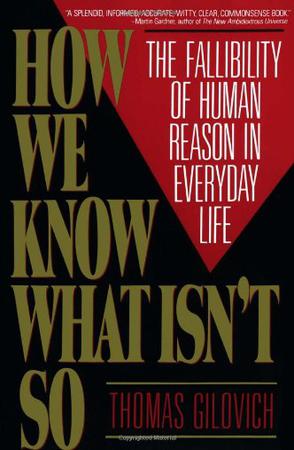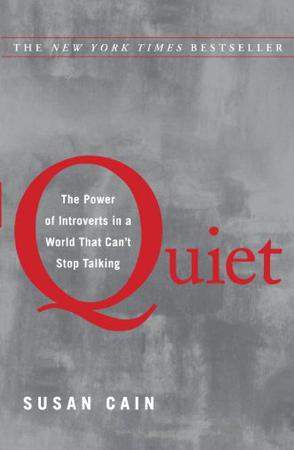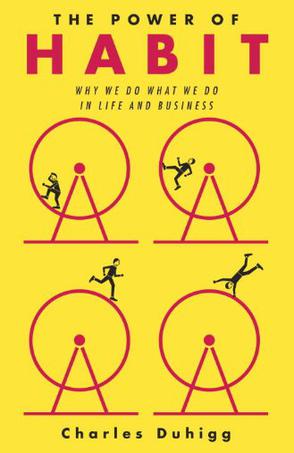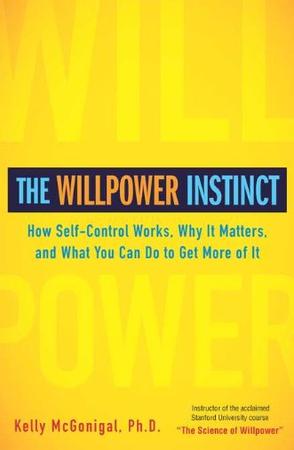-

How We Know What Isn't So
From Publishers Weekly Sports fans who think that basketball players shoot in "hot streaks," and maternity nurses who maintain that more babies are born when the moon is full adhere to erroneous beliefs, according to Gilovich, associate professor of psychology at Cornell. With examples ranging from the spread of AIDS to the weight of Scholastic Aptitude Test scores, he skewers popular but mistaken assumptions. Faulty reasoning from incomplete or ambiguous data, a tendency to seek out "hypothesis-confirming evidence" and the habit of self-serving belief are among the factors Gilovich pinpoints in his sophisticated anaylsis. However, in the book's second half, his debunking of holistic medicine, ESP and paranormal phenomena is superficial and one-sided, marred by some of the very tendencies he effectively exposes in the "true believers." Copyright 1991 Reed Business Information, Inc. --This text refers to an out of print or unavailable edition of this title. From Kirkus Reviews The subtexts of this first-class critique of human (non)reason are that we all tell ourselves lies (at least some of the time)...that if you want to believe it's true, it is (faith healing, ESP)...that humans can't help seeing patterns where none exist (in clouds, in disastrous events, in gamblers' streaks). Furthermore, if you would like to learn more about how not to deceive yourself, you might take a course in one of the ``soft'' probabilistic sciences like psychology. This might be construed as self-serving, since Gilovich happens to teach psychology at Cornell. However, the point is well taken because such courses should expose students to a minimum of statistics--such as the law of regression, which says that when two variables are partially related, extremes in one variable are matched, on average, by less extreme variables in the other. (Children of tall parents are tall, but not as tall as their parents.) Gilovich attributes the general lack of appreciation of the law to ``the compelling nature of judgment by representation''--by which the predicted outcome should be as close to the data as possible: the son of a 6'5'' dad should be close to 6'5''. Gilovich also points to other pitfalls in reasoning, such as failure to record negative outcomes (how many times do you dream of an old friend and not bump into him the next day?). And he discusses deeper motives--e.g., fear of dying, prospects of power or immortality, and similar self-aggrandizing traits that fortify superstitions and the will to believe. Altogether, a satisfying splash of skepticism and reason in a world where the Lake Wobegon phenomenon--``the women are strong, the men are good-looking and all the children are above average''- -prevails. -- Copyright ©1991, Kirkus Associates, LP. All rights reserved. --This text refers to an out of print or unavailable edition of this title. -

Quiet
At least one-third of the people we know are introverts. They are the ones who prefer listening to speaking, reading to partying; who innovate and create but dislike self-promotion; who favor working on their own over brainstorming in teams. Although they are often labeled "quiet," it is to introverts that we owe many of the great contributions to society--from van Gogh’s sunflowers to the invention of the personal computer. Passionately argued, impressively researched, and filled with indelible stories of real people, Quiet shows how dramatically we undervalue introverts, and how much we lose in doing so. Taking the reader on a journey from Dale Carnegie’s birthplace to Harvard Business School, from a Tony Robbins seminar to an evangelical megachurch, Susan Cain charts the rise of the Extrovert Ideal in the twentieth century and explores its far-reaching effects. She talks to Asian-American students who feel alienated from the brash, backslapping atmosphere of American schools. She questions the dominant values of American business culture, where forced collaboration can stand in the way of innovation, and where the leadership potential of introverts is often overlooked. And she draws on cutting-edge research in psychology and neuroscience to reveal the surprising differences between extroverts and introverts. Perhaps most inspiring, she introduces us to successful introverts--from a witty, high-octane public speaker who recharges in solitude after his talks, to a record-breaking salesman who quietly taps into the power of questions. Finally, she offers invaluable advice on everything from how to better negotiate differences in introvert-extrovert relationships to how to empower an introverted child to when it makes sense to be a "pretend extrovert." This extraordinary book has the power to permanently change how we see introverts and, equally important, how introverts see themselves. -

The Power of Habit
NAMED ONE OF THE BEST BOOKS OF THE YEAR BY The Wall Street Journal • Financial Times A young woman walks into a laboratory. Over the past two years, she has transformed almost every aspect of her life. She has quit smoking, run a marathon, and been promoted at work. The patterns inside her brain, neurologists discover, have fundamentally changed. Marketers at Procter & Gamble study videos of people making their beds. They are desperately trying to figure out how to sell a new product called Febreze, on track to be one of the biggest flops in company history. Suddenly, one of them detects a nearly imperceptible pattern—and with a slight shift in advertising, Febreze goes on to earn a billion dollars a year. An untested CEO takes over one of the largest companies in America. His first order of business is attacking a single pattern among his employees—how they approach worker safety—and soon the firm, Alcoa, becomes the top performer in the Dow Jones. What do all these people have in common? They achieved success by focusing on the patterns that shape every aspect of our lives. They succeeded by transforming habits. In The Power of Habit, award-winning New York Times business reporter Charles Duhigg takes us to the thrilling edge of scientific discoveries that explain why habits exist and how they can be changed. With penetrating intelligence and an ability to distill vast amounts of information into engrossing narratives, Duhigg brings to life a whole new understanding of human nature and its potential for transformation. Along the way we learn why some people and companies struggle to change, despite years of trying, while others seem to remake themselves overnight. We visit laboratories where neuroscientists explore how habits work and where, exactly, they reside in our brains. We discover how the right habits were crucial to the success of Olympic swimmer Michael Phelps, Starbucks CEO Howard Schultz, and civil-rights hero Martin Luther King, Jr. We go inside Procter & Gamble, Target superstores, Rick Warren’s Saddleback Church, NFL locker rooms, and the nation’s largest hospitals and see how implementing so-called keystone habits can earn billions and mean the difference between failure and success, life and death. At its core, The Power of Habit contains an exhilarating argument: The key to exercising regularly, losing weight, raising exceptional children, becoming more productive, building revolutionary companies and social movements, and achieving success is understanding how habits work. Habits aren’t destiny. As Charles Duhigg shows, by harnessing this new science, we can transform our businesses, our communities, and our lives. -

The Willpower Instinct
-

From Dictatorship to Democracy
-

The Wright Brothers
Two-time winner of the Pulitzer Prize David McCullough tells the dramatic story-behind-the-story about the courageous brothers who taught the world how to fly: Wilbur and Orville Wright. On a winter day in 1903, in the Outer Banks of North Carolina, two unknown brothers from Ohio changed history. But it would take the world some time to believe what had happened: the age of flight had begun, with the first heavier-than-air, powered machine carrying a pilot. Who were these men and how was it that they achieved what they did? David McCullough, two-time winner of the Pulitzer Prize, tells the surprising, profoundly American story of Wilbur and Orville Wright. Far more than a couple of unschooled Dayton bicycle mechanics who happened to hit on success, they were men of exceptional courage and determination, and of far-ranging intellectual interests and ceaseless curiosity, much of which they attributed to their upbringing. The house they lived in had no electricity or indoor plumbing, but there were books aplenty, supplied mainly by their preacher father, and they never stopped reading. When they worked together, no problem seemed to be insurmountable. Wilbur was unquestionably a genius. Orville had such mechanical ingenuity as few had ever seen. That they had no more than a public high school education, little money and no contacts in high places, never stopped them in their “mission” to take to the air. Nothing did, not even the self-evident reality that every time they took off in one of their contrivances, they risked being killed. In this thrilling book, master historian David McCullough draws on the immense riches of the Wright Papers, including private diaries, notebooks, scrapbooks, and more than a thousand letters from private family correspondence to tell the human side of the Wright Brothers’ story, including the little-known contributions of their sister, Katharine, without whom things might well have gone differently for them.